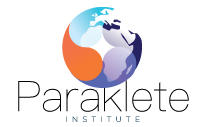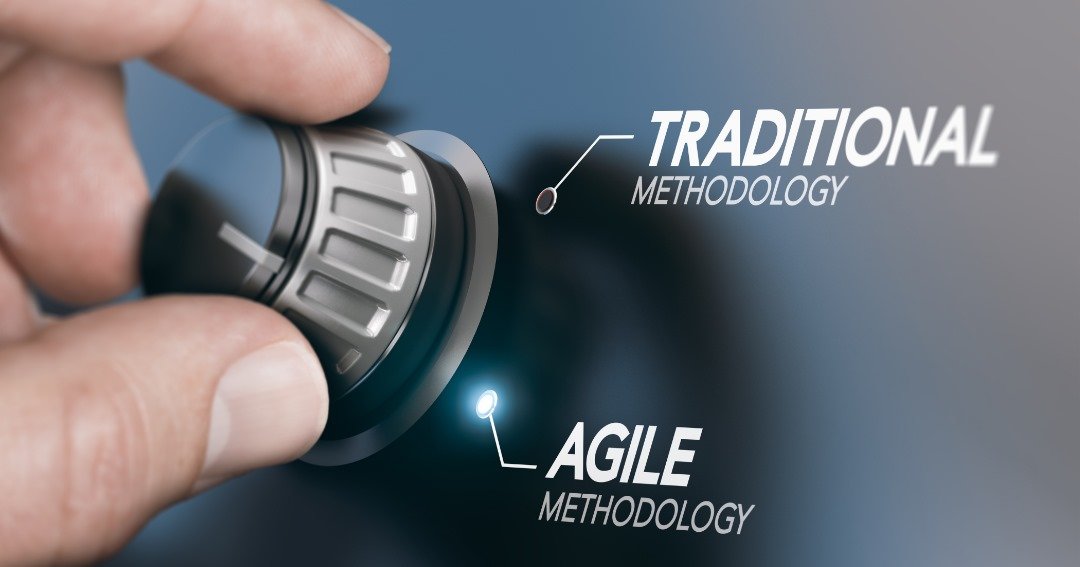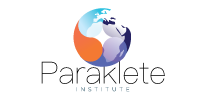Table of Contents
This article will contrast Agile vs. Waterfall methodology, exploring their core principles, benefits, and potential drawbacks. This comprehensive analysis aims to equip you with the knowledge necessary to decide which methodology is best suited for your project.
In project management, the choice of methodology can significantly impact the success of your project. Two of the most prominent methodologies are Agile and Waterfall. Each has its unique strengths and weaknesses, and the optimal choice depends on various factors, including project type, team dynamics, and client requirements.
Agile vs. Waterfall Methodology: Understanding Agile Methodology
Agile is a dynamic and iterative approach to project management and software development. It emphasizes flexibility, collaboration, and customer satisfaction. Unlike traditional methodologies, Agile focuses on delivering minor, incremental updates frequently rather than a single, comprehensive product at the end.
Agile’s emphasis on adaptability suits projects with rapidly changing requirements or highly competitive markets. This flexibility allows teams to pivot and address unforeseen challenges without derailing the entire project. The iterative cycles, known as sprints, enable continuous improvement and refinement of the product, ensuring that it remains aligned with customer expectations.
Core Principles of Agile
- Customer Collaboration Over Contract Negotiation: Agile prioritizes continuous customer interaction and feedback, ensuring that the final product aligns closely with customer needs. This principle helps in building truly user-centric products, as ongoing feedback loops provide insights into customer preferences and pain points.
- Responding to Change Over Following a Plan: Agile is designed to adapt to changes even in later stages of development, making it highly flexible. This adaptability is crucial in dynamic environments where project requirements can evolve based on market trends or technological advancements.
- Individuals and Interactions Over Processes and Tools: Agile values team members’ contributions and encourages direct communication. This focus on human interaction fosters a collaborative atmosphere where team members can leverage each other’s strengths to solve problems efficiently.
- Working Software Over Comprehensive Documentation: While documentation is essential, Agile emphasizes delivering functional software. This principle ensures that teams focus on creating value through usable software rather than getting bogged down by excessive paperwork.
Benefits of Agile
- Flexibility and Adaptability: Agile’s iterative nature allows for adjustments based on real-time feedback, making it ideal for projects with evolving requirements. This flexibility ensures that the project can adapt to changes without significant disruptions.
- Improved Customer Satisfaction: Regular updates and continuous customer involvement ensure that the final product meets expectations. Frequent increment delivery allows customers to see progress and provide timely feedback.
- Enhanced Team Collaboration: Agile fosters a collaborative environment, improving communication and cooperation among team members. This collaboration leads to a more cohesive team that can quickly address issues and implement solutions.
- Early and Predictable Delivery: Agile’s iterative approach ensures that working software is delivered early and frequently, providing immediate value to stakeholders and allowing for early identification of potential issues.
Potential Drawbacks of Agile
- Scope Creep: Agile’s flexibility can sometimes lead to scope creep, where the project expands beyond its original objectives. If not managed properly, this can result in delays and increased costs.
- Requires High Customer Involvement: Agile necessitates frequent customer interaction, which may not always be feasible. This high level of involvement can be challenging if the customer is unavailable or engaged.
- Less Predictable: Agile’s iterative nature can make it challenging to predict timelines and budgets accurately. This unpredictability can concern stakeholders who require clear timelines and budget forecasts.
- Requires Experienced Teams: Agile methodologies often require experienced and self-organizing teams. Without the right skills and mindset, teams may struggle to implement Agile practices effectively.
Agile vs. Waterfall Methodology: Understanding Waterfall Methodology
Waterfall is a linear and sequential approach to project management. Each phase of the project must be completed before the next one begins. This methodology is characterized by its structured and rigid nature, making it suitable for projects with well-defined requirements.
Waterfall’s predictability and clear structure make it an attractive option for projects where minimal changes and requirements are well understood from the outset. Its step-by-step approach ensures that each phase is thoroughly completed before proceeding, reducing the risk of overlooking critical aspects of the project.
Core Principles of Waterfall
- Sequential Phases: Waterfall divides the project into distinct phases, such as requirements analysis, design, implementation, testing, and maintenance. This sequential approach ensures that each phase is thoroughly planned and executed before proceeding to the next.
- Documentation: Comprehensive documentation is created at each phase, providing a detailed roadmap for the project. This documentation serves as a reference for the team and helps maintain consistency and clarity throughout the project lifecycle.
- Fixed Requirements: Waterfall assumes that all project requirements can be gathered upfront and remain unchanged throughout the project lifecycle. This assumption allows for precise planning and resource allocation, reducing uncertainties.
Benefits of Waterfall
- Clear Structure: Waterfall’s sequential nature provides a clear and structured approach, making it easier to manage and track progress. This structure is particularly beneficial for projects with well-defined deliverables and timelines.
- Defined Requirements: The waterfall’s emphasis on upfront requirements gathering reduces ambiguity and sets clear expectations. This clarity helps align the project objectives with stakeholder needs from the beginning.
- Ease of Management: Waterfall’s linear progression simplifies project management and allows for straightforward milestone tracking. This ease of management is advantageous for teams and stakeholders who prefer a predictable workflow.
- Thorough Documentation: The comprehensive documentation created at each phase ensures that all aspects of the project are well-documented. This documentation can be invaluable for future reference, training, and regulatory compliance.
Potential Drawbacks of Waterfall
- Inflexibility: Waterfall’s rigid structure makes it difficult to accommodate changes once the project is underway. This inflexibility can be problematic in dynamic environments where requirements may evolve.
- Delayed Testing: Testing is typically deferred until the end of the project, which can result in issues being discovered late in the process. If significant defects are found late in the process, this delay can lead to higher costs and longer timelines.
- Customer Feedback Limitations: Limited customer interaction during development can lead to misalignment with customer expectations. This lack of ongoing feedback can result in a final product that does not fully meet user needs.
- Risk of Rework: Significant rework may be required if errors or changes are identified late in the project. This rework can be time-consuming and costly, impacting the project timeline and budget.
Agile vs. Waterfall Methodologies Compared
Choosing between Agile and Waterfall methodologies requires a thorough understanding of the project requirements, team dynamics, and client expectations. Let’s compare the two methods based on several key factors:
Project Requirements
- Agile: Best suited for projects with evolving or unclear requirements. Agile’s flexibility allows for adjustments based on ongoing feedback. This adaptability is particularly beneficial for innovative projects where requirements may change as new insights are gained.
- Waterfall: Ideal for projects with well-defined, stable requirements. Waterfall’s structured approach ensures that all requirements are addressed upfront. This predictability is advantageous for projects with clear deliverables and minimal expected changes.
Timeline and Budget
- Agile: Due to their iterative nature, agile projects can be less predictable in terms of timeline and budget. However, they offer the advantage of delivering incremental value throughout the project. This incremental delivery can provide early returns on investment and allow for adjustments based on real-time feedback.
- Waterfall: Waterfall offers a more predictable timeline and budget, as all phases are planned and documented in advance. This predictability helps set clear expectations and manage stakeholder commitments effectively.
Customer Involvement
- Agile Requires continuous customer interaction and feedback, making it suitable for projects with high customer involvement. This ongoing engagement ensures the product remains aligned with customer needs and expectations.
- Waterfall: This approach involves customers primarily during the requirements phase, which can be advantageous for projects with limited customer availability. This limited involvement can also be beneficial if the customer prefers a hands-off approach during development.
Risk Management
- Agile: Agile’s iterative approach allows for early detection and mitigation of risks, as each iteration includes testing and feedback loops. This proactive risk management helps in addressing issues before they escalate.
- Waterfall: Waterfall’s sequential nature can delay risk detection until later phases, potentially leading to higher-impact issues. If significant risks are identified late in the process, this delayed detection can result in costly rework and project delays.
Team Dynamics
- Agile fosters a collaborative and adaptive team environment, encouraging direct communication and teamwork. This collaborative culture can lead to increased innovation and problem-solving efficiency.
- Waterfall: Waterfall’s structured approach can be beneficial for teams that prefer clear roles and responsibilities and a linear workflow. This clarity can help manage expectations and ensure that team members understand their specific tasks and deliverables.
- Agile fosters a collaborative and adaptive team environment, encouraging direct communication and teamwork. This collaborative culture can lead to increased innovation and problem-solving efficiency.
- Waterfall: Waterfall’s structured approach can be beneficial for teams that prefer clear roles and responsibilities and a linear workflow. This clarity can help manage expectations and ensure that team members understand their specific tasks and deliverables.
Agile vs. Waterfall Methodologies: A Comparison
| Feature | Agile | Waterfall |
|---|---|---|
| Approach | Iterative and incremental, focusing on flexibility and adaptation. | Linear and sequential, with distinct phases. |
| Project Requirements | Best suited for projects with evolving or unclear requirements. | Ideal for projects with well-defined, stable requirements. |
| Timeline and Budget | Less predictable due to its iterative nature, but offers incremental value delivery. | More predictable, with upfront planning and documentation. |
| Customer Involvement | Requires continuous customer interaction and feedback. | Involves customers primarily during the requirements phase. |
| Risk Management | Enables early detection and mitigation of risks through iterative testing and feedback. | Risk detection may be delayed until later phases, potentially leading to higher impact issues. |
| Team Dynamics | Fosters collaboration and adaptability, encouraging direct communication and teamwork. | Beneficial for teams that prefer clear roles, responsibilities, and a linear workflow. |
| Avantages | Flexibility, adaptability, improved customer satisfaction, early and predictable delivery, and enhanced team collaboration. | Clear structure, defined requirements, ease of management, and thorough documentation. |
| Drawbacks | Scope creep, requires high customer involvement, less predictable timelines, and budgets, and requires experienced teams. | Inflexibility, delayed testing, limited customer feedback, risk of rework. |
Agile vs. Waterfall Methodologies: Conclusion
Choosing the proper project management methodology is crucial for the success of any project. Agile and Waterfall are two prominent methodologies with unique strengths and weaknesses. The choice between Agile and Waterfall depends on various factors, including project type, team dynamics, and client requirements.
Agile methodology offers flexibility and adaptability, making it suitable for projects with rapidly changing requirements or highly competitive markets. Its iterative approach allows for continuous improvement and collaboration, enhancing customer satisfaction and early delivery of working software. However, Agile may require high customer involvement and experienced teams to implement effectively.
On the other hand, the Waterfall methodology provides a clear and structured approach, making it ideal for projects with well-defined requirements and minimal expected changes. Its sequential phases ensure thorough planning and documentation, reducing risks and allowing for precise timeline and budget forecasts. However, Waterfall’s rigidity can make it less suitable for dynamic projects and may delay risk detection and customer feedback. To make an informed decision between Agile and Waterfall methodologies, consider project requirements, timeline, customer involvement, risk management, and team dynamics. Evaluate your project’s specific needs and constraints to determine the method that best aligns with your goals.
While Agile and Waterfall represent two distinct approaches to project management, it’s essential to understand their place within the broader Agile landscape. We recommend exploring our ultimate guide on Agile and Scrum Methodologies to gain a comprehensive understanding of Agile principles and practices and their relationship with Scrum.
In conclusion, both Agile and Waterfall methodologies have merits, and the optimal choice depends on your project’s specific characteristics. By understanding each methodology’s principles, benefits, and potential drawbacks, you can make an informed decision that will set your project up for success.



